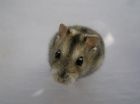(Press-News.org) Specialist researchers from LSTM have identified the diverse mechanisms by which variations in venom occur in related snake species and the significant differences in venom pathology that occur as a consequence.
Working with colleagues from Bangor University and Instituto de Biomedicina de Valencia in Spain, the team assessed the venom composition of six related viperid snakes, examining the differences in gene and protein expression that influence venom content. The research, published in PNAS, also assessed how these changes in venom composition impacted upon venom-induced haemorrhage and coagulation pathologies, and how these changes can adversely affect antivenoms used to treat snakebite.
LSTM's Dr Nicholas Casewell, first author and NERC Research Fellow, said: "Our work shows that venom variation observed between related snake species is the result of a complex interaction between a variety of genetic and postgenomic factors acting on toxin genes. This can involve different genes housed in the genome being turned on or off in different snakes at different stages of venom toxin production. Ultimately, the resulting venom variation results in significant differences in venom-induced pathology and lethality and can undermine the efficacy of antivenom therapies used to treat human snakebite victims."
Every year, snakebites kill up to 90,000 people, mostly in impoverished, rural tropical areas, as well as causing thousands of debilitating injuries to survivors, in part the reason that snakebite has the status of a neglected tropical disease. Antivenom can work but its efficacy is largely restricted to the snake species used in its manufactures and is often ineffective in treating snakebite by different, even closely related species.
LSTM's Dr Robert Harrison, senior author of the study and Head of the Alistair Reid Venom Unit, said: "The findings underscore challenges to developing broad-spectrum snakebite treatments, because conventional antivenom is produced by immunising horses or sheep with the venom from a specific species of snake. Consequently, antivenin produced for one species of saw-scaled viper will not necessarily neutralise the venom of another species of saw-scaled viper, highlighting how changes in venom composition can adversely affect snakebite therapy."
INFORMATION:
For further information, please contact:
Mrs Clare Bebb
Senior Media Officer
Liverpool School of Tropical Medicine
Office: +44 (0)151 705 3135
Mobile: +44 (0)7889535222
Email: c.bebb@liv.ac.uk
Liverpool School of Tropical Medicine (LSTM) has been engaged in the fight against infectious, debilitating and disabling diseases since 1898 and continues that tradition today with a research portfolio in excess of well over £200 million and a teaching programme attracting students from over 65 countries.
For further information, please visit: http://www.lstmliverpool.ac.uk
LSTM researchers identify the complex mechanisms controlling changes in snake venom
Study looks at venom variation in closely related snake species
2014-06-10
ELSE PRESS RELEASES FROM THIS DATE:
Grain legume crops sustainable, nutritious
2014-06-10
Popular diets across the world typically focus on the right balance of essential components like protein, fat, and carbohydrates. These items are called macronutrients, and we consume them in relatively large quantities. However, micronutrients often receive less attention. Micronutrients are chemicals, including vitamins and minerals, that our bodies require in very small quantities. Common mineral micronutrients include zinc, iron, manganese, magnesium, potassium, copper, and selenium.
A recent study published in Crop Science examined the mineral micronutrient content ...
Seafarers brought Neolithic culture to Europe, gene study indicates
2014-06-10
How the Neolithic people found their way to Europe has long been a subject of debate. A study published June 6 of genetic markers in modern populations may offer some new clues.
Their paper, "Maritime route of colonization of Europe," appears in the online edition of the Proceeding of the National Academy of Sciences.
Between 8,800 to 10,000 B.C., in the Levant, the region in the eastern Mediterranean that today encompasses Israel and the West Bank, Jordan, Syria and part of southern Turkey, people learned how to domesticate wild grains. This accomplishment eventually ...
In fighting obesity, targeting popular teens not all that effective
2014-06-10
MAYWOOD, Ill. – In the fight against teenage obesity, some researchers have proposed targeting popular teens, in the belief that such kids would have an outsize influence on their peers.
But in a Loyola University Chicago study, researchers were surprised to find that this strategy would be only marginally more effective than targeting overweight kids at random.
Results are published in the journal Social Science & Medicine.
"I don't think targeting popular kids would be worth the extra effort it would take to identify them," said David Shoham, PhD, MSPH, senior ...
Study: Little evidence that No Child Left Behind has hurt teacher job satisfaction
2014-06-10
WASHINGTON, D.C., June 10, 2014 ─ The conventional wisdom that No Child Left Behind (NCLB) has eroded teacher job satisfaction and commitment is off the mark, according to new research published online today in Educational Evaluation and Policy Analysis, a peer-reviewed journal of the American Educational Research Association.
"Estimating the Effects of No Child Left Behind on Teachers and Their Work Environment," by Jason A. Grissom of Vanderbilt University, Sean Nicholson-Crotty of Indiana University, and James R. Harrington of the University of Texas at Dallas, ...
Scientific breakthrough: International collaboration has sequenced salmon genome
2014-06-10
Vancouver, BC - Today the International Cooperation to Sequence the Atlantic Salmon Genome (ICSASG) announced completion of a fully mapped and openly accessible salmon genome. This reference genome will provide crucial information to fish managers to improve the production and sustainability of aquaculture operations, and address challenges around conservation of wild stocks, preservation of at-risk fish populations and environmental sustainability. This breakthrough was announced at the International Conference on Integrative Salmonid Biology (ICISB) being held in Vancouver ...
Summertime cholesterol consumption key for wintertime survival for Siberian hamsters
2014-06-10
Increasingly, scientific findings indicate that an organism's diet affects more than just general health and body condition. In an article published in a forthcoming issue of the journal Physiological and Biochemical Zoology, researchers from Nicolaus Copernicus University have found evidence that the diet of some animals must include cholesterol in order for them to enter necessary periods of energy conservation known as torpor.
Torpor is a temporary, strategic decrease of body temperature and metabolic, heart, and respiration rates that can enable an organism to survive ...
RHM announces publication latest issue: Population, environment & sustainable development
2014-06-10
London, June 10, 2014 – Papers published in the latest themed issue of Reproductive Health Matters demonstrate the extent of evidence and progressive thinking around population dynamics and sustainability that is informing development policies and programs. The theme of this issue is timely given that meetings and negotiations are currently taking place around the world to decide what will be included in the post-2015 development goals.
The discussions about the post-2015 agenda have focused on calling out to sexual and reproductive health and rights (SRHR) advocates ...
Male dwarf spiders make sure offspring is their own
2014-06-10
Chastity belts were not first thought out in mediaeval times – members of many animal groups have evolved similar mechanical safeguards to ensure their paternity. Male dwarf spiders, for instance, use mating plugs to block off the genital tract of the female they have just mated with. The larger and older the plug, the better the chances are that other males will not make deposits in a female's sperm storage organ, too. So says Katrin Kunz and co-authors of the Zoological Institute and Museum in Greifswald, Germany, in an article published in Springer's journal Behavioral ...
Signpost for health services: Teenagers go from school psychologist to family doctor
2014-06-10
After initially visiting a school psychologist, adolescents in the United States with a mental disorder often go to seek care from their pediatricians or family doctors. Fewer of them continue their treatment directly with a psychotherapist or doctor specialized in mental disorders. This shows an analysis conducted by scientists at the University of Basel that has just been published in the academic journal PLOS ONE. The results are based on a nationally representative cohort of 6,500 U.S. teenagers.
A considerable number of children and adolescents suffer from a mental ...
ESMO survey sheds light on common clinical practice for incompletely resected lung cancer
2014-06-10
VIDEO:
R.Califano explains why ESMO Young Oncologists launched a survey on common clinical practice for incompletely resected lung cancer and analyses interesting results claiming for more adherence to guidelines and more...
Click here for more information.
Lugano, Switzerland, 10 June 2014 -- A landmark survey of more than 700 specialists provides crucial real-world insight into the treatments most oncologists choose for lung cancer patients whose tumour has been incompletely ...
LAST 30 PRESS RELEASES:
New fossil study illuminates on the evolutionary success of frogs
Patient-specific human liver model to understand disease mechanisms
Confused by the doctor's questionnaire? U of A study suggests it's common
How do brains stay stable, and when might a dose of flexibility be helpful?
mRNA revitalizes aging immune systems—the liver as a fountain of youth
Rural-urban differences in the prevalence of chronic pain among adult cancer survivors
Food insecurity, burnout, and social isolation among resident and fellow physicians
How do spinal cord injuries heal?
Detailed cell map unlocks secrets of how reproductive organs form
Large language models unleash AI’s potential for autonomous and explainable materials discovery
Gut bacteria have evolved rapidly to digest starches in ultra-processed foods
New risk score helps predict pancreatic cancer recurrence
New evidence challenges understanding of Parkinson’s disease
A new study reveals how embryos and the uterus “talk” during implantation
Cedars-Sinai reports heart attacks, general illness spiked after LA fires
PolyU develops ultra-stable, mucus-inspired hydrogel to boost gastrointestinal wound healing
Flour choice shapes sourdough microbial communities
Can a retinal implant reverse macular degeneration?
Feeding fungi plant remnants produces tasty protein to fortify vegan, vegetarian diets
New tech reduces false positives from breast ultrasounds
Drone-mounted lab monitors fertilizer runoff in real time
Short, light-intensity exercise boosts executive function and elevates mood in children
Jeonbuk National University researchers reveal new interface engineering strategy for efficient and stable back-contact solar cells
Tyrosinase drives hydroquinone-induced exogenous ochronosis: not HGD inhibition
UMass Amherst chemists develop unique tool for studying RNA
Disappointment alters brain chemistry and behavior
A built-in odometer: new study reveals how the brain measures distance
Stress-related brain signals drive risk of cardiovascular disease in people with depression and anxiety
New details on role of fat transport molecules in Alzheimer’s onset
Study illuminates how an antiviral defense mechanism may lead to Alzheimer’s disease
[Press-News.org] LSTM researchers identify the complex mechanisms controlling changes in snake venomStudy looks at venom variation in closely related snake species




